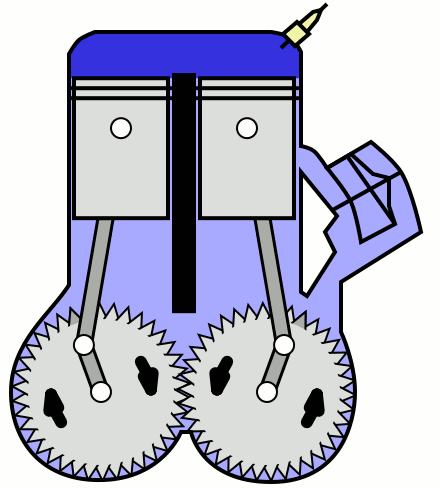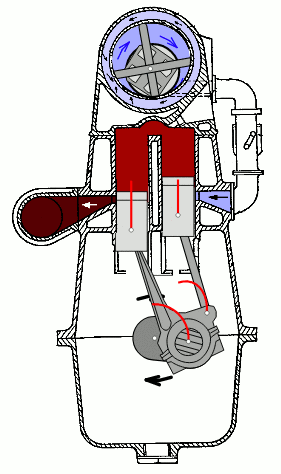|
Isetta
The Isetta is an Italian-designed microcar initially manufactured in 1953 by the Italian firm Iso (automobile), Iso SpA, and subsequently built under license in a number of different countries, including Argentina, Spain, Belgium, France, Brazil, Germany, and the United Kingdom. The name ''Isetta'' is the Italian diminutive form of ''Iso'', meaning "little Iso". Because of its egg shape and Bubble (physics), bubble-like windows, it became known as a bubble car, a name also given to other similar vehicles. In 1955, the BMW Isetta became the world's first mass-production car to achieve a Fuel economy in automobiles, fuel consumption of . It was the top-selling single-cylinder car in the world, with 161,728 units sold. __TOC__ Iso Isetta (Italy) The car originated with the Italian firm of Iso Rivolta, Iso SpA. In the early 1950s the company was building refrigerators, motor scooters and small three-wheeled trucks. Iso's owner, Renzo Rivolta, decided to build a small car for ... [...More Info...] [...Related Items...] OR: [Wikipedia] [Google] [Baidu] |
Iso Rivolta
ISO Rivolta is an Italian car and motorbike manufacturer active in the motor vehicle sector since 1938. Over the years, the company has taken various names, including Isothermos, Iso Autoveicoli Spa in 1952, Iso Rivolta in 1962, Iso Motors in 1973 and, in 2017, a return to ISO Rivolta. History ISO Rivolta has its origins in Isothermos of Bolzaneto, a factory producing electric heaters and chillers, purchased by the engineer Renzo Rivolta in 1939 and moved to Bresso in 1942, after a bombing raid on Genoa destroyed the offices. Immediately after the end of World War II, Renzo Rivolta decided to devote his company to the production of motorbikes, a type of market that offered significant commercial profits in those years. Early years: motorcycles The Iso scooter was one of the company's early vehicles. It was equipped with a twin-cylinder engine inspired by the 125 Puch. Together with the Isomoto, the company was encouraged to add new versions and models such as the Isocarro, ... [...More Info...] [...Related Items...] OR: [Wikipedia] [Google] [Baidu] |
Bubble Car
Microcar is a term often used for the smallest size of cars, with three or four wheels and often an engine smaller than . Specific types of microcars include bubble cars, cycle cars, invacar, quadricycles and voiturettes. Microcars are often covered by separate regulations to normal cars, having relaxed requirements for registration and licensing. Predecessors Voiturette is a term used by some small cars and tricycles manufactured from 1895 to 1910. Cyclecars are a type of small, lightweight and inexpensive car manufactured mainly between 1910 and the late 1920s. Europe 1940–1970: Microcars The first cars to be described as microcars (earlier equivalents were called voiturettes or cyclecars) were built in the United Kingdom and Germany following World War II, and remained popular until the 1960s. They were originally called minicars, but later became known as microcars. France also produced large numbers of similar tiny vehicles called voiturettes, but they were r ... [...More Info...] [...Related Items...] OR: [Wikipedia] [Google] [Baidu] |
VELAM
VELAM (''Véhicule Léger à Moteur'', or "light vehicle with motor") was a French automobile manufacturer that made ''VELAM'' microcars under the licence of the Isetta from the Italian Iso. Powered by a 236 cc engine, it was capable of speeds in excess of . Around 5,000 cars were built between 1955 and 1959. The Velam was featured in the 1957 film ''Funny Face'' and the 1962 French film '' Adieu Philippine''. In 1957 a Rekord Car was built, so 30th July 1957 Bianchi and Claude drove to seven international (class K) records; eleven further were taken. https://rarefrenchsportscars.wordpress.com/wp-content/uploads/2016/01/velam-final.pdf, retrieved 15 September 2024 See also * Isetta * Microcar Microcar is a term often used for the smallest size of cars, with three or four wheels and often an engine smaller than . Specific types of microcars include bubble cars, cycle cars, invacar, quadricycles and voiturettes. Microcars are ofte ... External links *http://microcar ... [...More Info...] [...Related Items...] OR: [Wikipedia] [Google] [Baidu] |
Split-single
In internal combustion engines, a split-single design is a type of two-stroke engine, two-stroke where two cylinders share a single combustion chamber. The first production split-single engine was built in 1918 and the design was used on several motorcycles and cars until the mid-1950s, although Puch continued producing split-single engines for motorcycles until 1970. During this time, the design was occasionally used for engines with four or more cylinders. Principle of operation The split-single uses a two-stroke engine, two-stroke cycle (i.e. where every downward stroke produces power) with the following phases: # Pistons travel upwards, compressing the fuel-air mixture in both cylinders. A spark plug ignites the mixture (in the right side cylinder in the animation) when the pistons are near the top of the cylinders. # Pressure from the ignited air-fuel mixture pushes both pistons downwards. Near the bottom of the travel, an exhaust port becomes exposed (at the rear of the l ... [...More Info...] [...Related Items...] OR: [Wikipedia] [Google] [Baidu] |
Split-single Engine
In internal combustion engines, a split-single design is a type of two-stroke where two cylinders share a single combustion chamber. The first production split-single engine was built in 1918 and the design was used on several motorcycles and cars until the mid-1950s, although Puch continued producing split-single engines for motorcycles until 1970. During this time, the design was occasionally used for engines with four or more cylinders. Principle of operation The split-single uses a two-stroke cycle (i.e. where every downward stroke produces power) with the following phases: # Pistons travel upwards, compressing the fuel-air mixture in both cylinders. A spark plug ignites the mixture (in the right side cylinder in the animation) when the pistons are near the top of the cylinders. # Pressure from the ignited air-fuel mixture pushes both pistons downwards. Near the bottom of the travel, an exhaust port becomes exposed (at the rear of the left side cylinder in the animation), c ... [...More Info...] [...Related Items...] OR: [Wikipedia] [Google] [Baidu] |
Dubonnet Suspension
Dubonnet suspension was a system of leading arm Independent suspension, independent front suspension and steering popular mainly in the 1930s and 1940s. Not very durable unless exactingly maintained, it was soon replaced by other designs. Description It consisted of a rigidly mounted Beam axle, axle beam from which the sprung steering and suspension arms pivoted around Kingpin (automotive part), kingpins mounted on the ends of the axle. The wheels themselves were mounted onto stub axles, suspended by self-contained suspension units outboard of the kingpins. The system featured an encased coil spring and shock absorber, which sealed in the oil needed to lubricate and protect the suspension parts. This was also the weakness of the layout, as any leaks would have negative effects on ride and durability. One advantage for a comfortable ride was the reduction in unsprung weight, as the kingpins and steering gear were inboard of the suspension, and not thus counted as sprung mass. Th ... [...More Info...] [...Related Items...] OR: [Wikipedia] [Google] [Baidu] |
MR Layout
In automotive design, an RMR, or rear mid-engine, rear-wheel-drive layout is one in which the rear wheels are driven by an engine placed with its center of gravity in front of the rear axle, and thus right behind the passenger compartment. Nowadays more frequently called 'RMR', to acknowledge that certain sporty or performance focused front-engined cars are also "mid-engined", by having the main engine mass behind the front axle, RMR layout cars were previously (until ca. the 1990) just called MR, or mid-engine, rear-wheel-drive layout), because the nuance between distinctly front-engined vs. front ''mid-engined'' cars often remained undiscussed. In contrast to the fully rear-engine, rear-wheel-drive layout, the center of mass of the engine is in front of the rear axle. This layout is typically chosen for its favorable weight distribution. Placing the car's heaviest component within the wheelbase minimizes its rotational inertia around the vertical axis, facilitating turn-in or ... [...More Info...] [...Related Items...] OR: [Wikipedia] [Google] [Baidu] |
Paris Motor Show
The Paris Motor Show () is a biennial auto show in Paris. Held during October, it is one of the most important auto shows, often with many new production automobile and concept car debuts. The show presently takes place in Paris expo Porte de Versailles. The ''Mondial'' is scheduled by the ''Organisation Internationale des Constructeurs d'Automobiles'', which considers it a major international auto show. In 2016, the Paris Motor Show welcomed 1,253,513 visitors, making it the most visited auto show in the world, ahead of Tokyo and Frankfurt. The key figures of the show are: of exhibition, 8 pavilions, 260 brands from 18 countries, 65 world premieres, more than 10 000 test drives for electric and hybrid cars, more than 10 000 journalists from 103 countries. Until 1986, it was called the ''Salon de l'Automobile''; it took the name in 1988 and ''Mondial Paris Motor Show'' in 2018. The show was held annually until 1976; since which time, it has been held biennially. History The ... [...More Info...] [...Related Items...] OR: [Wikipedia] [Google] [Baidu] |
Renzo Rivolta
Renzo Rivolta (5 September 1908 – 20 August 1966) was an Italian Engineer. Career In 1939 Rivolta founded ‘Isothermos’ a successful manufacturer of refrigeration units. After World War II his company began producing motor scooters and then motorcycles. By 1950, Isothermos was renamed Iso Autoveicoli and was Italy's third largest two-wheel producer, behind Vespa and Lambretta. Rivolta produced home appliances, and Iso scooters, before moving to car production. In 1952 he developed the Isetta microcar (which he described as "half motorcycle and half car") and sold the car in Italy. The car became famous through the licensed production at BMW. The company later produced sports touring cars starting with the Iso Rivolta IR 300, using Chevrolet 327ci engines and gearboxes. Rivolta used to say "At the wheel of a car I enjoy myself only above 120 mph." Iso entered racing, and won its class at Le Mans in 1965. In the 1960s Rivolta's company produced the Iso Grifo, Bizzarrini, an ... [...More Info...] [...Related Items...] OR: [Wikipedia] [Google] [Baidu] |




